Asura’s Wrath Review
Posted by
FeverDog
on
Asura’s Wrath is a study in how to be an experimental game without adding a single experimental aspect. CyberConnect2 has taken the concepts of mainstream action games like God of War or Uncharted and, instead of reinventing the formula, has simply rearranged the components to make a linear, story focused game instead of a standard beat ‘em up.
But how does this story focus fare in this theoretically new medium? To understand the way a story could affect the player in a video game, we must look beyond the cutscene and see every aspect this game has to offer us. Does Asura’s Wrath have what it takes, not just as an interactive anime, but as a complete, full retail price video game?
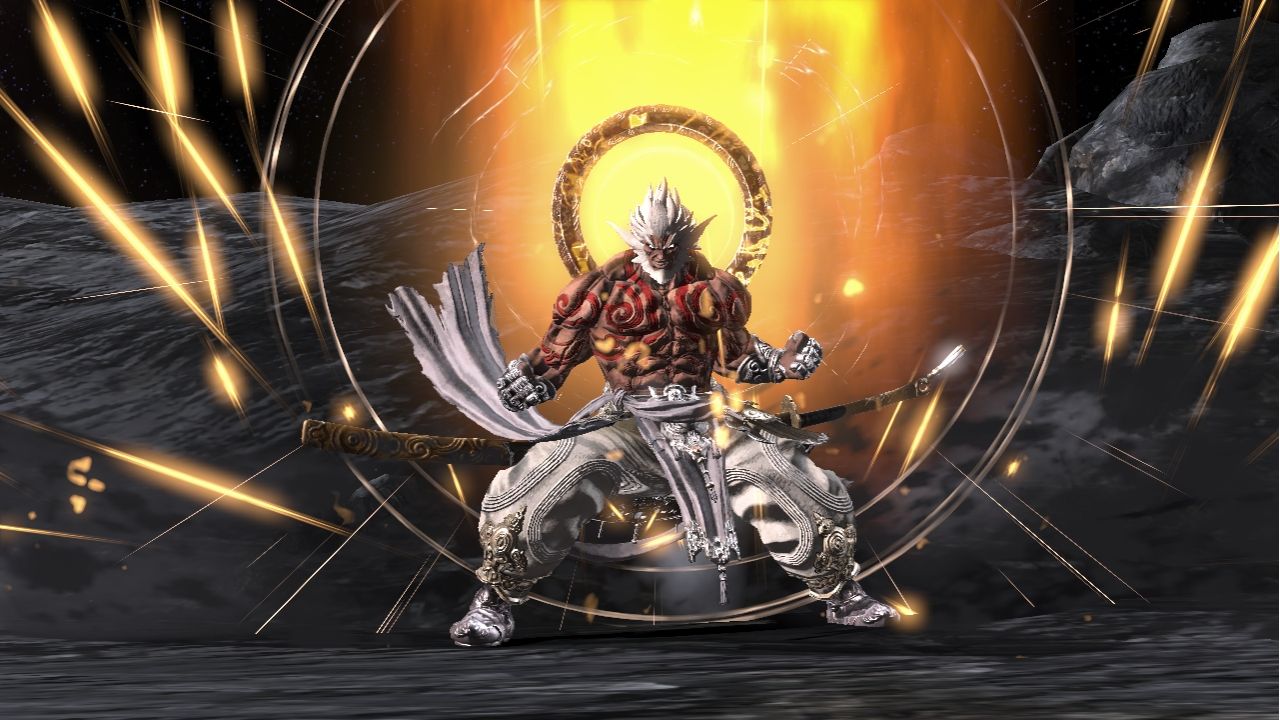
To start off with, very little needs to be said about the game’s presentation. If you’ve seen the trailers, you understand exactly what the game looks like. There are no pre-rendered cutscenes and every moment of the game’s story takes place in-engine. The rough edges and occasional flat texture of the game quickly becomes drowned in the massive scale and flashiness of every scene. When the game slows down, these issues become more prominent without a spectacle to back them up, but the art direction is well designed enough to still feel crisp and vivid.
The presentation is carried along by some truly awe-inspiring cinematography, easily some of the best the gaming medium has seen outside of Silent Hill and Shadow of the Colossus. The color choices all blend well, creating a fluid yet stirring sense of epicness that pervades every fight and every scene.
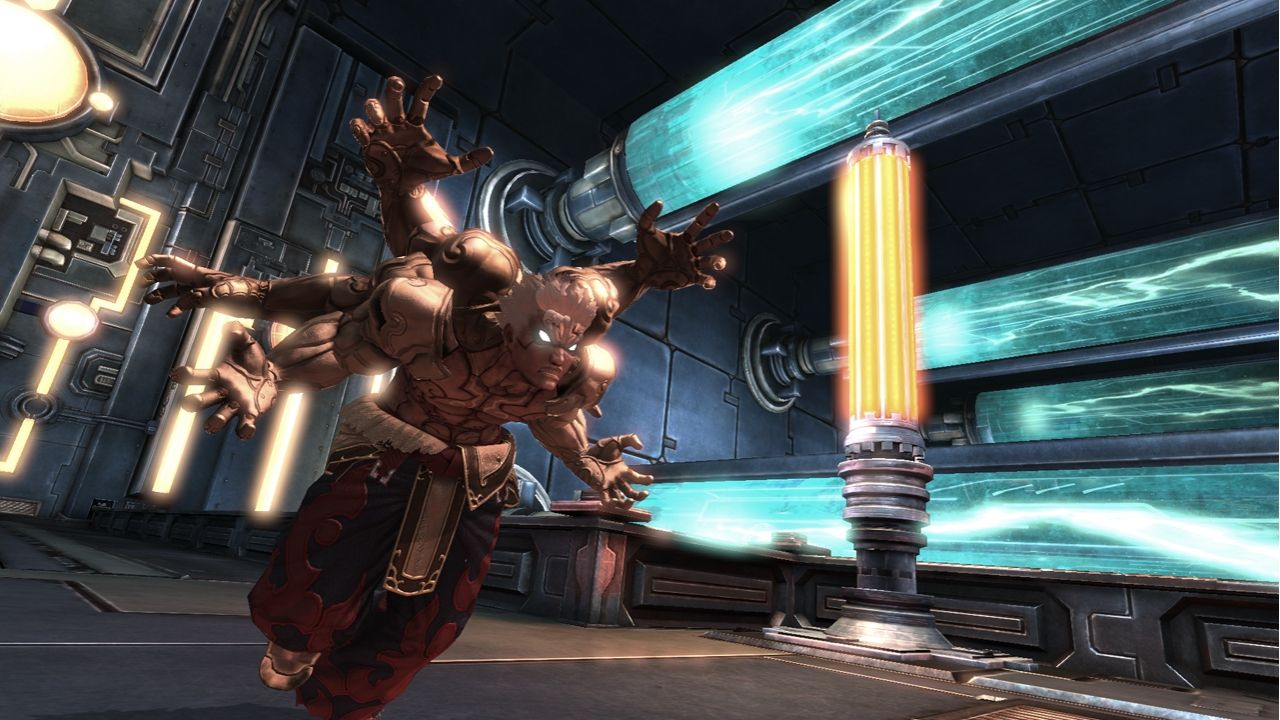
Asura’s Wrath doesn’t have a perfect sense of flow, but to its credit, switching rapidly from cutscene to beat ‘em up gameplay is a fairly rocky journey to begin with. Every scene is a toss up between long un-interactive cutscenes, quicktime events, and direct control scenes. The game seems to take devious pleasure in switching focus without warning. However, this never comes off as insulting or unfair. Rather it is a brutal, albeit helpful, reminder to never take your hands off the controller.
The gameplay in Asura’s Wrath is often a mixed bag. Instead of enemies having a standard life bar or a fixed amount of baddies to rage your way through, there is a wrath bar… oh I see what they did there. Asura’s wrath bar fills up with every downed enemy or finely placed hay-maker and once the bar is sufficiently aggravated and full to bursting, Asura makes a quick dash at whatever stubbornly un-demolished person or thing stands in his way, triggering a quicktime event. Overall the system works well and fits the timing and pace of the game nicely.
However, battles in the early stages of the game can suffer from a lack of strategic options or tactical thought. No matter which difficulty the game is placed on, the early battles consist of low-tension mook-smashings. In direct defiance of this apparently anticipated criticism, the game has one of the healthiest difficulty curves in modern gaming. The difficulty increases at such a steady yet tangible pace that later battles feel more climactic as a result.
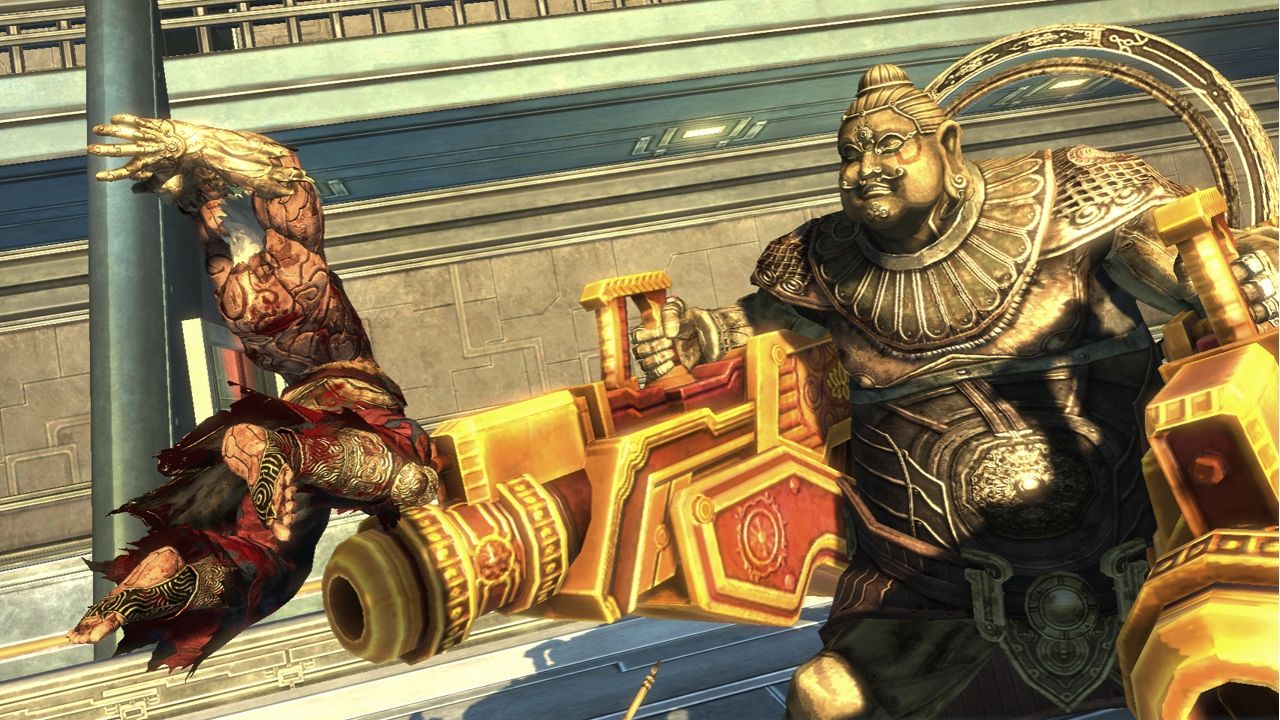
Perhaps the biggest misstep the gameplay takes is its tacit admission that, because it’s a story based game doomed to be a short ride and built around setpiece moments, that it doesn’t need a complicated and deeply involved combat system. This slightly cynical philosophy was probably for the best for a six to seven hour game. Were the gameplay any more complicated or intricate, there would simply not be enough of it by Asura’s Wrath’s end. However, by taking the simple approach, what combat there is can be infuriatingly unremarkable.
Numerous quicktime events aside, the gameplay switches off from Rez-like shooting segments and on-foot God of War style sequences. The shooting segments are extremely fun in short bursts but tend to drag on after every enemy on the screen has been effectively murdered. The hand-to-hand combat sections flourish when Asura is given a single enemy with which to use his arsenal of punches, charges, dodges and other miscellaneous maneuvers. Placed against a wave of enemies, the combat scenes become too clustered and chaotic to allow for any effective strategy and devolve into single-button mashing. These segments become mercifully shorter as the game reaches its second half.
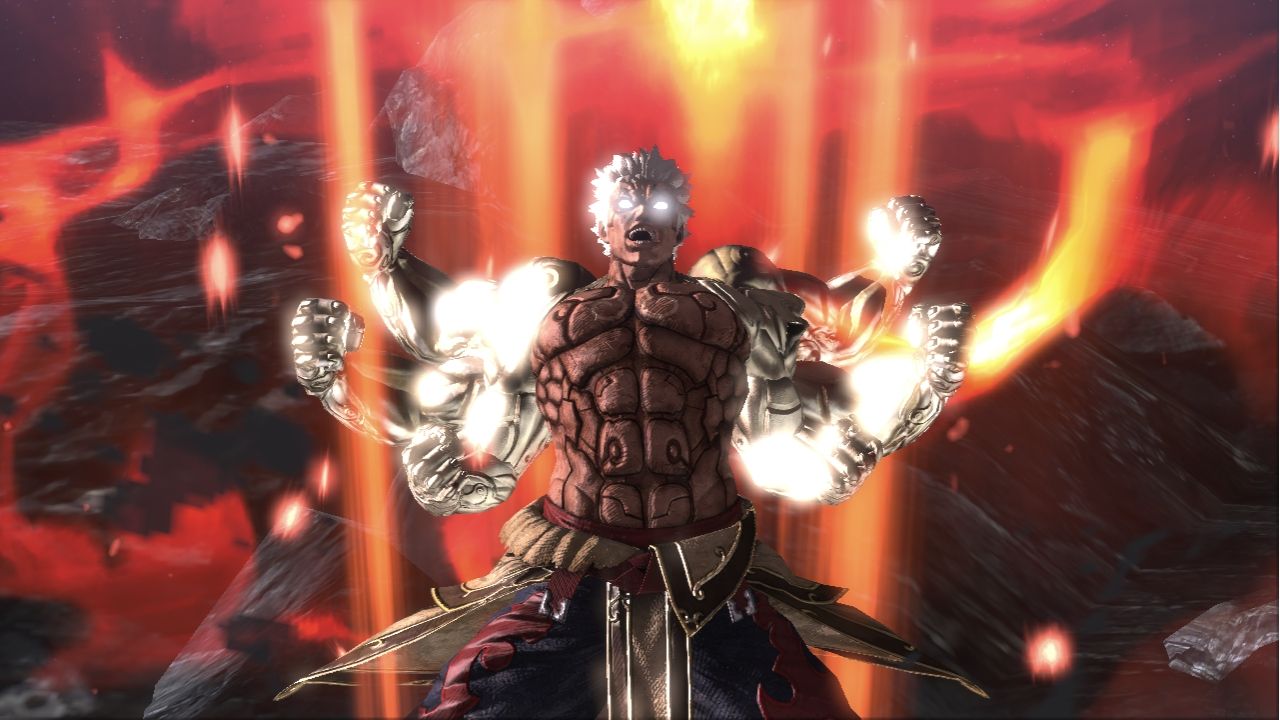
So with excellent presentation and decent gameplay, occasionally marred by over-simplicity, let’s get back to the burning question. How is the story? It seems to keep a steady quality level of above-average, occasionally dipping into slow, same-y non-drama and absolute seat-edging emotional tidal waves. Where it improves on video game stories, it seems to integrate every moment of its gameplay into an actual story-driven moment, instead of a road that connects set pieces. When compared to its anime counterparts, being a release with a clear beginning and end, it eliminates the almost paradoxically tight love affair between Japanese story telling and filler.
Asura is an angry guy. Anyone who’s seen the box art or heard the title can tell you that. Being so angry, the story becomes less and less about Asura as a character and rather a study on the difference between righteous anger and bloodlust. As a character meant to flesh out and carry an entire game, Asura eventually becomes little more than a proxy for the concept of idealized wrath and determination, proving repeatedly to be a demigod that simply will not stay down. Due to a well rounded balancing act of pure anger and good intention, Asura eventually becomes a sympathetic character due to the fact that the game will often heap very real, very heavy consequences on a man with a million enemies and allow the audience to watch him struggle and squirm as he paints a perfect picture of a bloodied corpse on its feet. Bruised, beaten, and breaking under his own weight, but still standing.
What makes the story most interesting, however, is everything that seems to be going on around Asura. Revolving around themes of sacrifice, brutality and righteousness, there seems to be real weight behind the decisions made by the numerous antagonists. They’re brutal, selfish and mean-spirited, but at the same time arguably in the right and highly justified in their actions. With morally ambiguous villains and heroes, the game will legitimately keep you guessing who may be right or wrong and these white knuckle moments persist right up until the final boss.
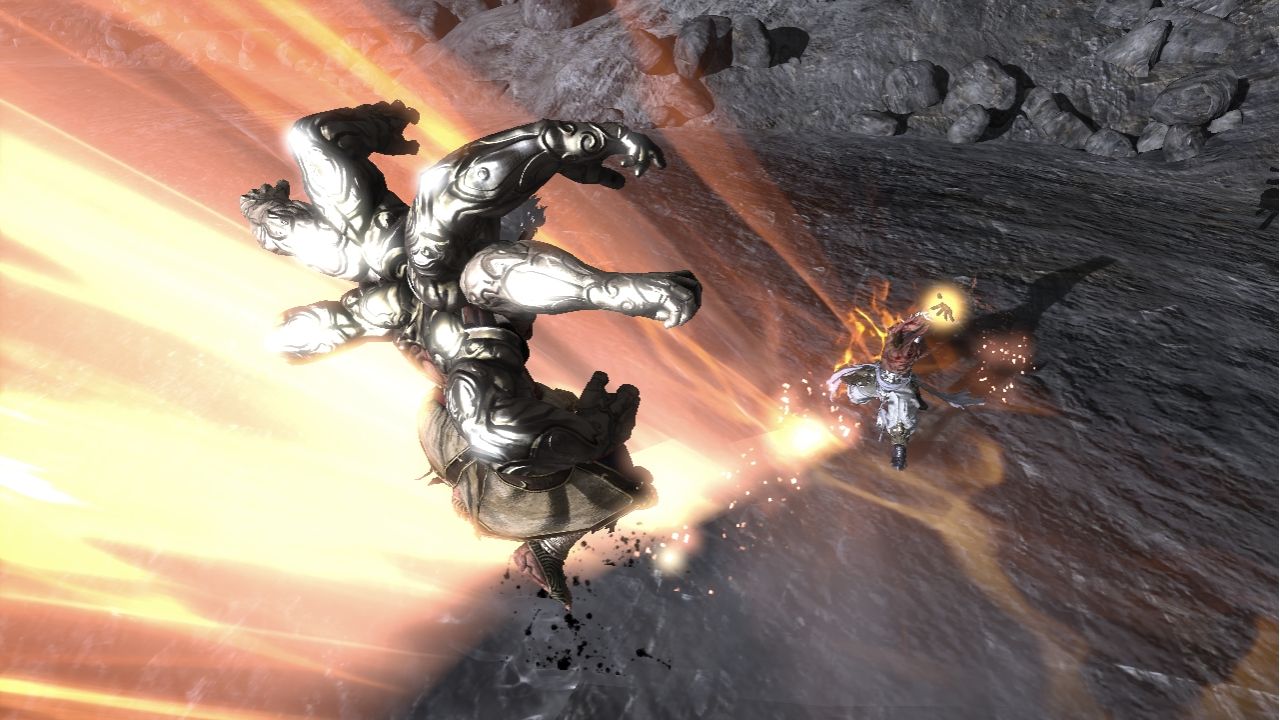
It should be stated, however, that after a satisfying end fight and an ending moment that passes fairly well as a conclusion, Asura’s Wrath drops the ball pretty hard, introducing a “True Ending” feature, which basically means playing the highly taxing end sequence over again just in time to see an unsatisfying cliffhanger. This sort of thing could be tolerated in a video game with less emphasis on story or a game not trying to carry any sort of emotional weight, but as it stands, the true ending is a black mark on the experience as a whole and will leave more invested players yearning for some true closure. Asura is a likable enough character, but an ending that informs us that Asura has no reason to stop being angry isn’t a tasty morsel of what’s yet to come. It’s a slap in the face to anyone invested in Asura as a character.
Asura’s Wrath is neither the lowest-common denominator explosion-fest made to play on mankind’s most relateable emotions for a quick cash grab, nor is it an astounding piece of art slated to set the medium of video game storytelling ablaze. It is, rather, a combination of two of gaming’s most relevant conventions with a tight and linear framework. It uses Heavy Rain’s plot-first sensibilities to emotionally invest the players in the already blood-pumping adrenaline rush of Devil May Cry’s extreme, controller gripping madness. What’s left is a game carried by presentation and well-told, pulpy fantasy adventure. For your money, you won’t be picking up a well-balanced, competition worthy fighting system or a massive 50+ hour epic, but rather a compelling and unique sci-fi thrill ride with enough twists and turns to make it well worth the money.
